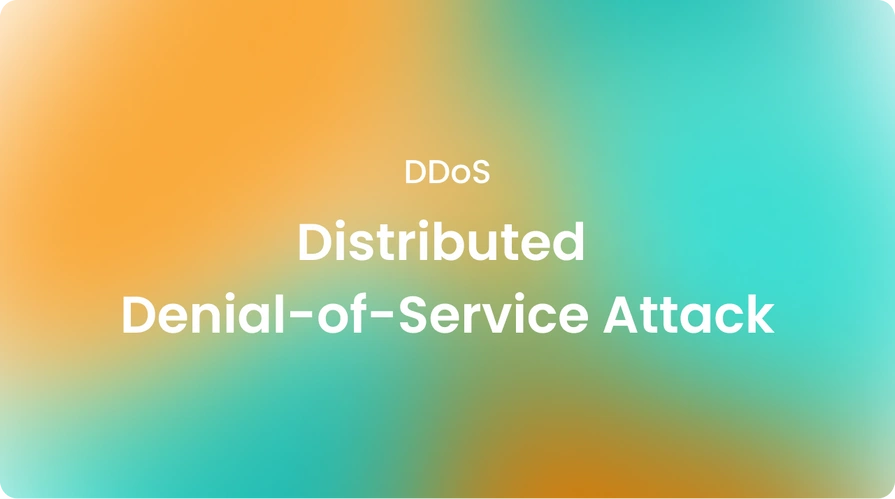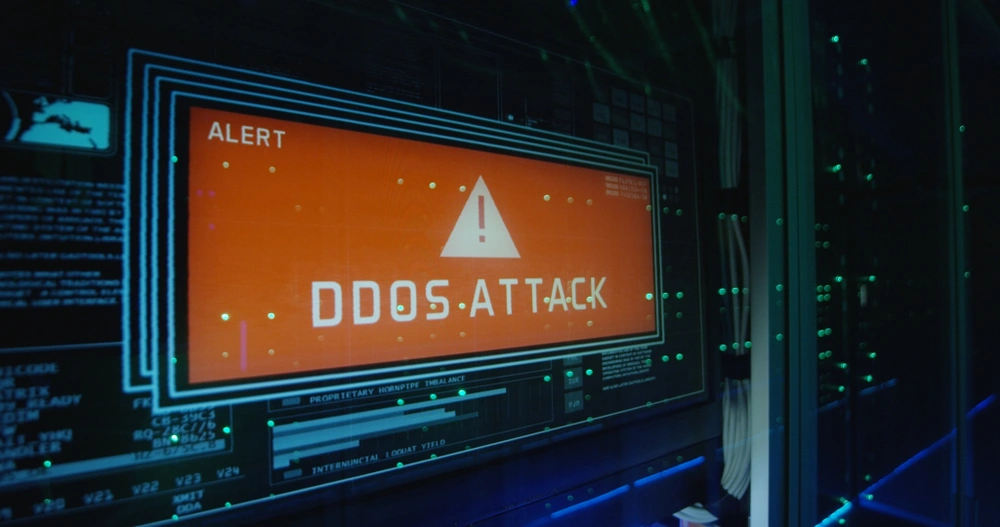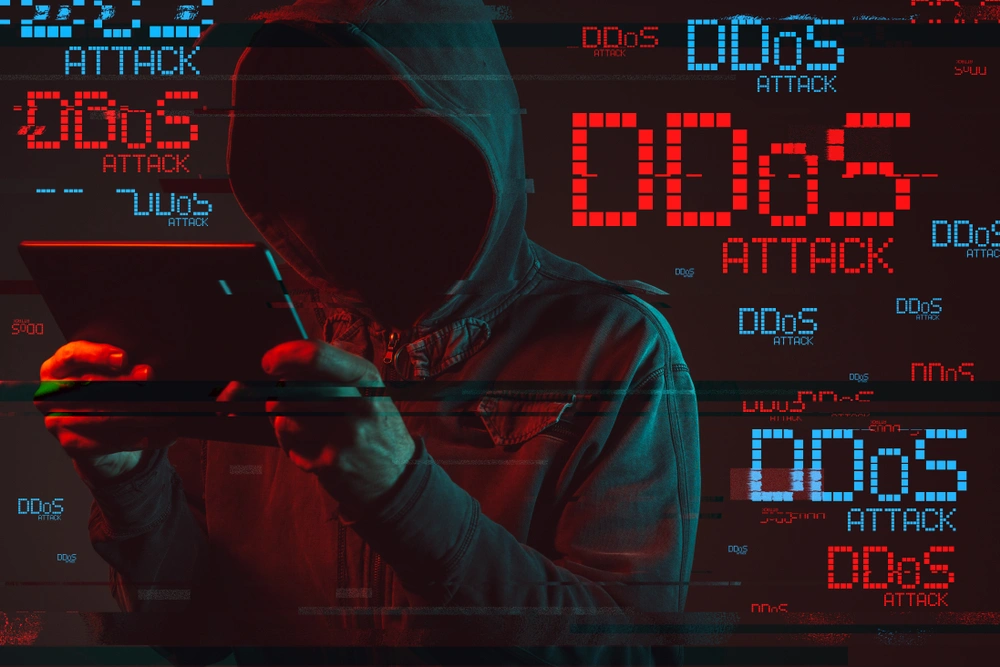|technology, knowledgehub
What Is a Distributed Denial-of-Service (DDoS) Attack?

A distributed denial of service (DDoS) attack is a malicious attempt to disrupt normal traffic to a server, service, or network by overwhelming it with a flood of internet traffic.
DDoS attacks typically target sites or services hosted on high-profile web servers, such as banks, credit card payment gateways, and even government websites. Join us in this blog as we take a deeper look at some common questions surrounding these cyber attacks. Let’s start to explore!
What is a DDoS IP attack?
A DDoS IP attack is a type of distributed denial of service attack where the target is identified by its Internet Protocol (IP) address instead of a domain name.
The attacker floods the victim's IP with ominous traffic in an attempt to exhaust the available internet bandwidth linked to that address and knock them offline.
Who created DDoS attacks?
While an exact creator is hard to pin down, some attribute the first documented DDoS attacks to protests in the late 1990s organized by hackers against websites like Amazon and Yahoo.
However, the methods and tools used in today's massive DDoS campaigns have continued to evolve far beyond those original techniques. Cybercriminals now have advanced botnets and exploit kits at their disposal to wreak havoc on a monumental scale.
How does a DDoS attack work?
First of all, attackers take control of numerous internet-connected devices without the owners' knowledge, usually by exploiting vulnerabilities in outdated or misconfigured software. Attackers enroll these compromised machines, sometimes numbering in the tens of thousands, in a "botnet."
Secondly, command-and-control servers direct the botnet to flood the target with more incoming traffic than it can possibly process. Common attack vectors include overwhelming the victim with numerous HTTP requests, TCP SYN packets, or UDP datagrams.
Who creates DDoS attacks?
Research shows that roughly 20% of DDoS attacks are launched by politicians and politically motivated groups, while the majority are carried out for financial gain. Cybercriminals either directly profit through extortion schemes or sell access to powerful botnets on the dark web.
However, hacktivists also play a periodic role, such as those disrupting Israeli websites in recent conflicts. Money, politics, or destabilization usually motivate DDoS creators.
How many computers do you need to DDoS?
To be highly effective, you need an army of commandeered computers, known as a botnet, to amplify the scale of your attacks. Most experts estimate you need at least a few hundred or more compromised machines under your control.
For truly gigantic DDoS attacks measured in terabits per second (Tbps) of traffic, the botnets sometimes number into the hundreds of thousands of devices. Of course, for smaller disruptions, fewer bots could still cause problems.
What are examples of DDoS attacks?
In 2023 alone, there were several high-profile DDoS incidents. In Q3, Cloudflare mitigated an unprecedented surge of hyper-volumetric attacks, including over 89 that exceeded 100 million requests per second.
In that same period, Zayo Group reported a 200% increase in DDoS volumes compared to the year before. Other major victims included US federal agencies, banks in Australia, and government websites in Colombia. As mentioned earlier, regional conflicts linked to Israeli digital properties caused a barrage.
How long do DDoS attacks last?
DDoS attack durations can vary widely, depending on the motive and capabilities of the perpetrator. Short-lived attacks lasting less than an hour comprised the majority at 28%, according to Nexusguard.
However, over 25% of attacks in 2023 spanned 12 hours or longer, underscoring the need for always-on mitigation systems. The latest record is a DDoS attack that bombarded its target nonstop for 11 days straight in September 2023.
Attackers often ramp up traffic slowly and relentlessly to circumvent thresholds while achieving their disruptive goals over extended periods covertly.
How many DDoS attacks happen per day?
The number of DDoS attacks worldwide rose sharply again in 2023, according to several cybersecurity firms. NETSCOUT detected over 13 million assaults for the entire year at a rate of 35,000+ per day.
Meanwhile, Akamai reported servicing more than 25 million DDoS attacks in 2023, confirming daily rates exceeding 68,000 on their infrastructure alone. China saw 200,000+ DDoS incidents daily, according to the China Internet Network Information Center.
Analysts project attack volumes will continue their rapid expansion, reaching 50,000–100,000 assaults per day for major countries like the US by 2024.
How many DDoS attacks will there be in 2024?
According to several cybersecurity sources who track the industry, DDoS attacks in 2024 will exceed levels seen in the previous year. Some predictions put the increase in incidents from 2023 to 2024 at 10–15%.
That is partly due to the ever-expanding surface area of attack due to the continued growth of networked devices and digital infrastructure combined with falling mitigation costs, which have democratized launching DDoS campaigns for nearly any threat actor.
With billions of attacks expected in 2023 alone, 2024 may see an avalanche topping ten billion disrupted connections.
What country do most DDoS attacks come from?
As per research from Netscout, the United States is consistently a top origin country for DDoS attacks, accounting for around 27–36% of all detected incidents annually.
However, when normalized for domestic internet connectivity, smaller nations like Lithuania, Vietnam, and New Caledonia rank far higher as primary attack hubs.
Geopolitical conflicts also cause short-term shifts, such as the spike in 2022 and 2023 when Israel targeted Palestinian websites and vice versa. Botnets usually anonymize the real culprits.
Are DDoS attacks profitable?
According to experts, DDoS services have indeed become a money-making criminal industry. Since modern attacks can top 2+ Tbps, even a brief disruption of a major website or platform can cost six figures per hour in lost business or become costly to remediate.
Consequently, numerous underground botnet operators are prepared to pay a premium for potent botnets and lease their firepower to the highest bidder.
For years now, advanced attacks with over 100 Gbps of traffic flooded at targets have been available illicitly for $300–500 USD, making DDoSing a desirable business for nefarious profiteers.
How are DDoS attacks detected?
Most experts recommend using a multi-layered approach with detection mechanisms both on-premise and through a mitigation service provider. Advanced algorithms can profile typical traffic patterns for a site and alert on dangerous statistical anomalies.
Filtering known botnet IPs, invalid packets, and checking request rates are common techniques. Network telemetry noting a flood of abnormal TCP connection attempts or spoofed source addresses may also expose an emerging campaign.
Behavioral detection is frequently the earliest warning sign before legitimate services start degrading under heavy overload conditions.
Can you stop a DDoS attack?
Targeted mitigation becomes critical when a flood is determined to be a full-blown DDoS event aimed at disruption rather than normal traffic variability.
Crypto service provider companies like Cryptobunq offer various secure crypto solutions to protect your crypto assets and your crypto project.
As an expert one-stop-stop crypto service provider, CBQ provides custody and wallet, exchange API, tokenization, node as a service, batch payments, checkout and invoicing, and more solutions for you and your business.
Cryptobunq is here to protect you with the power of blockchain technology and with an expert team. Others may leverage a reverse proxy or edge defense. Filter rules or rerouting of suspect traffic sources can also help.
Though complete blocking is difficult, properly provisioned security can substantially weaken an attack, allowing legitimate services to keep functioning. Advanced persistent assaults may require multiple tactics or on-premise hardware to choke off.
How to stop DDoS attacks?
As the largest and most sophisticated DDoS attacks continue evolving, a holistic approach is ideal. Monitor traffic patterns to notice anomalies earlier. Filter undesirable packets before they ever reach backend assets.
Use a mitigation service with advanced filtering, throttling rules, and automatic rerouting of suspicious traffic. Regularly review configurations, close unused inbound ports, patch vulnerabilities that could lead to compromise, and train users about social engineering tricks so as not to join botnets.
Most importantly, prepare your incident response plan for when assaults do materialize and practice coordinated defenses to block attacks as quickly as possible. By being diligent, organizations can potentially withstand even enormous floods aimed at disruption.
The bottom line
DDoS attacks pose a serious threat to online services and will remain a persistent tactic for disruptors to leverage. As a cybersecurity threat, distributed denial-of-service attacks are likely to continue in 2024 too, as we have seen in this complete guide.
However, proactive detection strategies combined with smart mitigation practices through a provider like Cryptobunq, which offers expert tools across crypto and blockchain services, give targeted organizations strong chances to withstand these digital storms.
By implementing layered security and an incident action plan, organizations can potentially minimize or neutralize the impacts of DDoS campaigns that aim to flood infrastructure.
If you are looking for advanced protection solutions against this evolving menace, contact us. You can also explore our case studies and check out our expertise to be sure to partner with us. Secure crypto service solutions await you!













